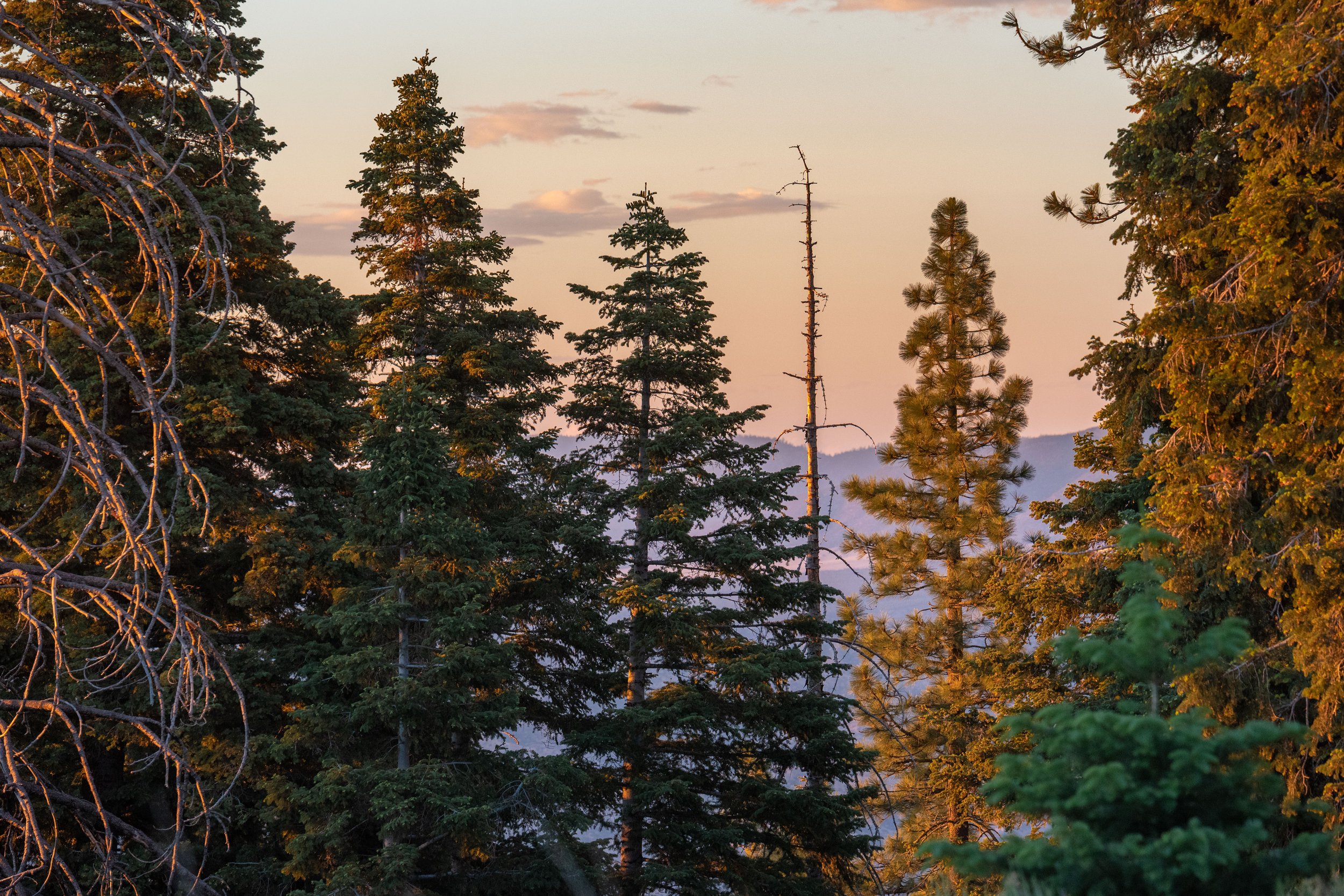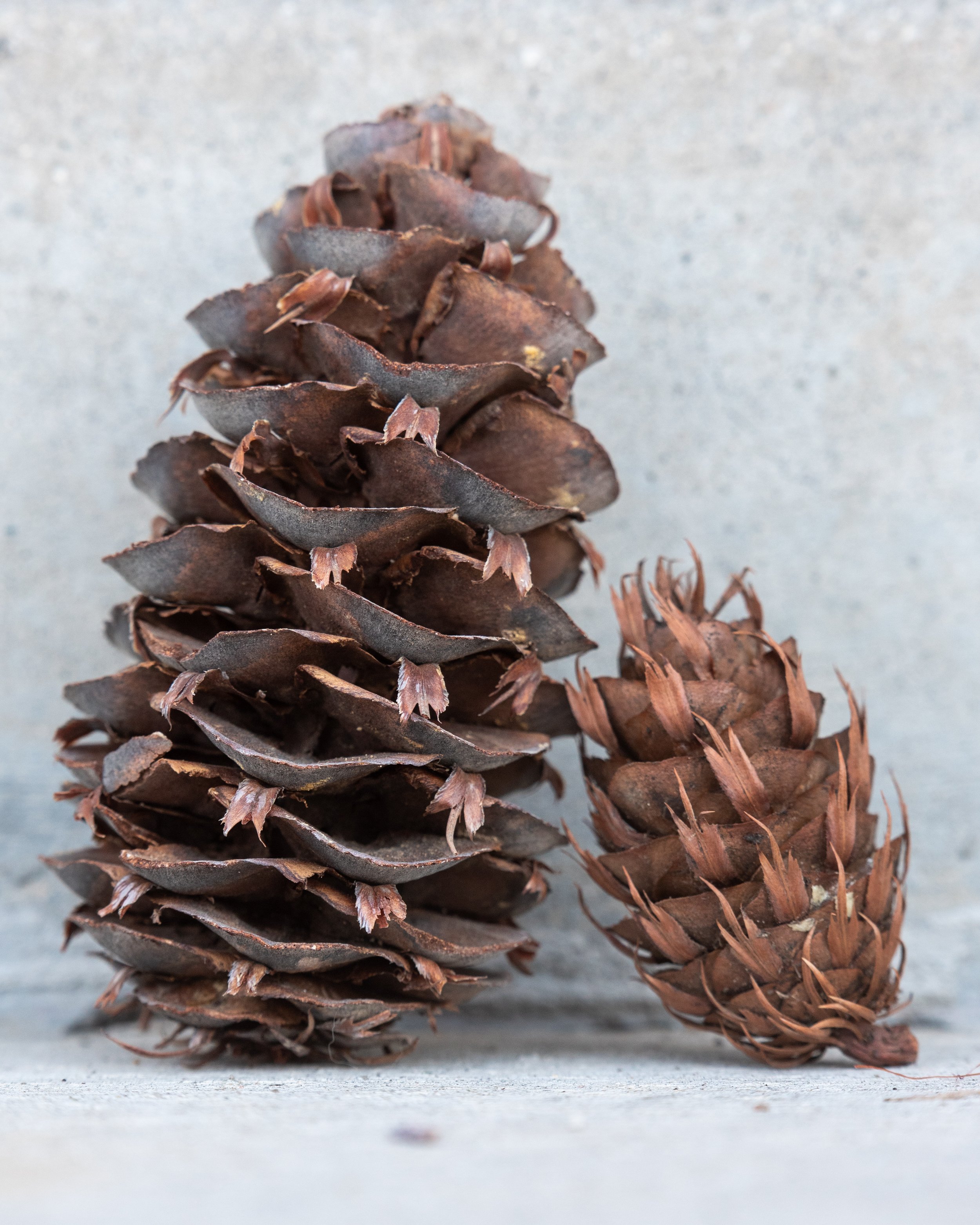
Conifers of Pine Mountain
A diverse array of plants can be found along Pine Mountain thanks to its unique topography. The east-west running ridge has distinct north and south facing slopes with differing microclimates—perfect for variuos ecosystems such as the magnificent old-growth conifer forests found across much of the mountain. In fact, this area is home to more conifer species than anywhere else in Ventura County. Keep reading to learn more about all of the wonderful coniferous trees that grow here.
Jeffrey (and Ponderosa) Pine
Jeffrey pine (Pinus jeffreyi) is by far the most prevalent pine species on the mountain. Ponderosa pine (P. ponderosa) is a very similar species and differentiating the two can be difficult. Ponderosa cones are smaller and often more prickly, and there are slight differences in the color of the foliage. One of the best ways to tell them apart is by smelling the bark—in California, Jeffrey pine bark has a sweet vanilla-like or butterscotch scent while ponderosa bark has no fragrance (though oddly it does smell sweet outside of California). However, ponderosa is much less common here and more generally across southern California compared to northern California, the Sierra Nevada, and the rest of western North America. On Pine Mountain, the Jeffrey pine is king. Unlike other pines on the mountain, the leaves of both of these species are relatively long and occur in bundles of three. The bark of older trees looks like it’s made up of large orange-red, armor-like plates. The thick bark helps protect the tree from wildfire.
Sugar Pine
Sugar pines (Pinus lambertiana) are interspersed among Jeffrey pines throughout much of the forested areas of Pine Mountain, even becoming dominant or co-dominant on some sites. They are easily identified by their long limbs that often droop at the ends, weighted down by massive cones that hang from the tips of branches. Sugar pine leaves are short compared to Jeffrey or ponderosa pine and they occur in bundles of five. If you find very long cones on the ground, chances are you’re standing under some sugar pines.
Singleleaf Pinyon Pine
Singleleaf pinyon pine can only be found at lower elevations, especially across the western end of the ridge where it grows alongside shrubs in the chaparral. This species is much more adapted to arid conditions, and it can be found growing abundantly north of Pine Mountain around the Cuyama Badlands, Lockwood Valley, and on the slopes of the San Emigdio Mountains. It is relatively short and has short, unbundled leaves. The cones are also small compared to other pines on the mountain, but their seeds are large and wingless.
White Fir
This particular conifer (Abies concolor) likely looks similar to what you envision when you hear the word “conifer.” It looks quite different from most pines when you look closely despite the fact that both pines and firs are in the same plant family. You can find white fir growing alongside Jeffrey and sugar pines on top of the ridge and especially across the north-facing slopes. The eastern end of the logging project area even has a large old-growth stand of white fir that looks like something you might see in the Sierra Nevada. White fir is one of only two species of true firs that can be found in the Los Padres National Forest (the other being the Santa Lucia fir in the Big Sur area).
California Incense-cedar
This unique tree (Calocedrus decurrens) is the largest member of the cypress family found on Pine Mountain, though it’s not nearly as common as pines and white firs. You generally only find it on the north-facing slopes of the mountain both at high elevation and even at lower elevations along the Gene Marshall-Piedra Blanca National Recreation Trail where it is much more common. It has distinct bark that is reminiscent of its cousins, the coast redwood and giant sequoia.
Bigcone Douglas-fir
The Los Padres National Forest is in the northernmost part of the bigcone Douglas-fir’s (Pseudotsuga macrocarpa) range, and the lower slopes of Pine Mountain are a great place to see them. While similar in some ways to its sibling, the Douglas-fir (P. menziesii) that is widespread across the Pacific Northwest, this endemic species has some key differences such as its tendency to grow in small stands nestled among the chaparral, its incredible fire resistance, and its lankier appearance. It can also sprout new leaves and branches from its trunk and branches after being scorched by fire, much like coast redwoods. Look for this species on the north-facing slopes of the mountain, especially at lower elevations.












































